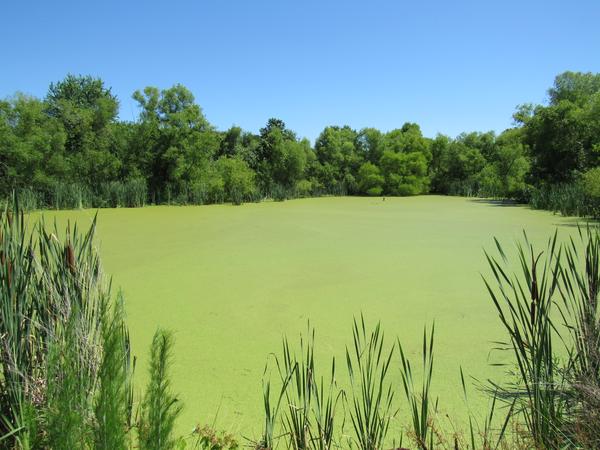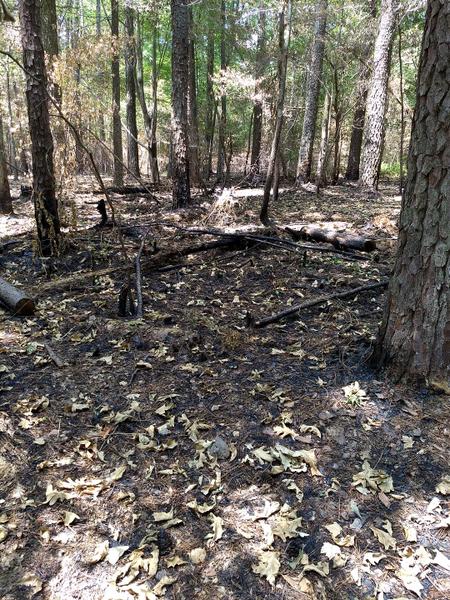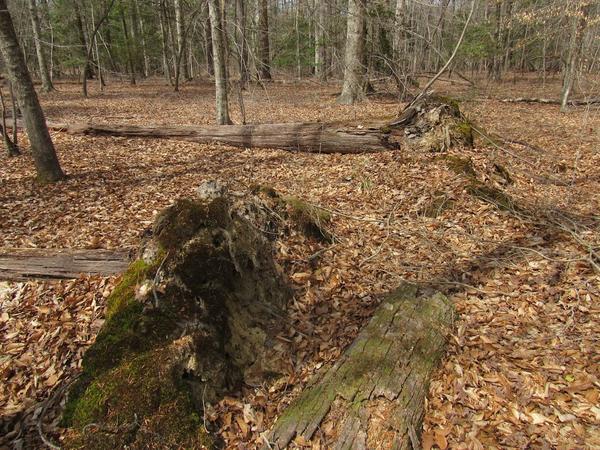Many people are interested in attracting wildlife to their property. Managing land for wildlife involves the maintenance and enhancement of the food, water, and cover components necessary for healthy populations.
Habitat can be defined as an area that provides an animal with adequate food, water, cover, and living space. However, without reference to a specific species, the term “habitat” is somewhat meaningless, because each species of plant and animal has unique habitat requirements. Hence, habitat improvements must be made with focal wildlife species in mind.
The smaller natural areas that abound on private lands and in many backyards can be enhanced using a variety of improvement options to provide habitat for a variety of animals. By choosing which species you want to attract, you can plan accordingly to maximize improvements. Wildlife improvements can be simple, inexpensive, and fun for the whole family.
Protect Key Areas
Within most properties, there are a few special areas that are important for their ability to provide unique benefits to wildlife. The protection of these unique areas is an easy and inexpensive way to enhance wildlife habitat.
Identify and maintain these important areas:
- Wetlands, including ephemeral pools, beaver ponds, spring seeps, and streams
- Fence lines and hedgerows that are maintained in fallow herbaceous vegetation with patches of shrubs and small trees
- Forest openings, also called treefall gaps
- Groves of mature hard and soft mast-producing trees
- Snags and fallen logs
- Rock outcrops and caves
After these key areas are protected, improve and enhance food and cover by using the following low cost techniques.
Improving Wildlife Food
- Promote tree, shrub, vine, and herbaceous species that are beneficial to wildlife (see table below).
- Remove invasive plant species that can outcompete native species.
- Create moist soil areas, including in beaver ponds (see Managing Beaver Ponds).
- Manage for herbaceous vegetation by disking openings or prescribed burning where practical. Always check local regulations before burning (see Herbaceous Plants for Wildlife).
- Thin forest to reduce tree canopy cover, allowing additional sunlight to promote a diverse understory of herbaceous and woody plants. Prescribed burning that follows a thinning helps clear away litter and promotes herbaceous plant germination.
- "Daylight" or remove trees shading access roads and logging decks to provide important foraging, nesting, and brooding areas.
|
Trees |
Oaks |
Blackgum |
|
Flowering dogwood |
Yellow-poplar |
|
|
Black cherry |
Persimmon |
|
|
Hickories |
American beech |
|
|
Pines |
Hollies |
|
|
Shrubs |
Blackberry |
Smooth sumac |
|
Wax myrtle |
Strawberry bush |
|
|
Elderberry |
Blueberry |
|
|
Pokeberry |
Wild plums |
|
|
Sassafras |
Spicebush |
|
|
Vines |
Trumpet creeper |
Virginia creeper |
|
Wild grape |
Coral honeysuckle |
|
|
Greenbrier |
||
|
Forbs |
Smartweeds |
Sunflowers |
|
Lespedeza (native) |
Wild strawberries |
|
|
Black-eyed Susan |
Milkweeds |
|
|
Ragweed |
Beggarweed |
|
|
For a more comprehensive list of native plants for attracting wildlife, see Landscaping for Wildlife with Native Plants |
||
Providing Protective Cover
Animals depend on dense cover throughout the year for concealment, protection from predators and severe weather, raising young, and resting. For most animals, cover is provided by dense understory vegetation, including shrubs, grasses, and forbs. Thinning and burning in forest are critical steps to maintain forest understory.
You also can construct brush piles on your land to provide cover for ground-nesting birds, rabbits, and other small mammals.
Building a Brush Pile
- Stack layers of 6-inch diameter logs at right angles to each other to make a base for the pile. Space logs within each layer 6-10 inches apart.
- Place tree tops, old Christmas trees, or limbs on top of the base to complete the pile.
- Ideal piles are 4 to 8 feet tall and from 10 to 20 feet in diameter. Well-constructed brush piles can supplement vegetation cover for 10-15 years.
- Construct up to four piles per acre, or one brush pile every 200 to 300 feet along woodland edges.
- Situate brush piles in close proximity to food sources and other vegetation cover. Isolated piles will receive little use.
Living Brush Piles (Hinge Cutting)
- Choose saplings that are 6 to 8 feet tall; sweetgum and red maple are excellent options.
- In the spring of the year, make a cut in the trunk with a hand or chainsaw 3-4 feet above the ground adjacent the intended location of the pile.
- Cut deep enough so that you can push the top over, leaving a connecting strip of bark and wood (hinge) to nourish the tree. Use a stake or stone to tie the top of the tree to the ground.
- Rework old piles every 5 or 6 years.
- Select trees with grape or other vines nearby that will grow and cover the pile.
In addition to constructing brush piles, take the following steps to improve and create wildlife habitat:
- Construct and properly place artificial nest structures for birds, bats, and small mammals (see Building Songbird Boxes; Woodland Wildlife Nest Boxes; Bats; and Owls).
- Manage for new snags by mechanically girdling or injecting selected trees with herbicide (see Snags and Downed Logs).
- Create temporary pools for breeding frogs and salamanders, songbirds, and other wildlife by digging out springs and potholes or by placing logs in low areas to pond flowing water (see Pools for Amphibians).
- Open dense forest canopies with improvement cuttings or “daylight” logging and access roads.

Plant a pollenator garden to attract birds, butterflies and other insects.
Liessa Bowen, Wildlife biologist CC BY-NC-SA 4.0

Create brush piles to attract small mammals, birds and reptiles.
Liessa Bowen, Wildlife biologist CC BY-NC-SA 4.0
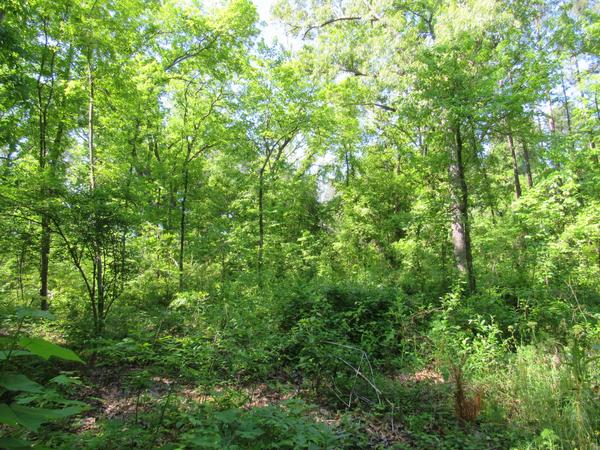
Early successional vegetation attracts many species of birds.
Liessa Bowen, Wildlife biologist CC BY-NC-SA 4.0

Thinned stands attract a variety of wildlife species.
Liessa Bowen, Wildlife biologist CC BY-NC-SA 4.0
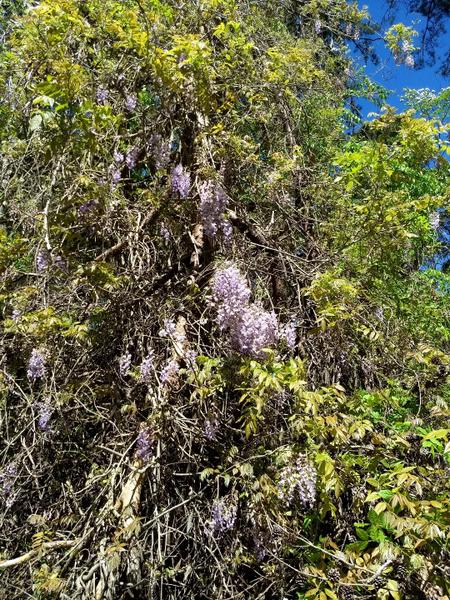
Remove invasive species (Wisteria sp.) to foster native wildlife plants.
Liessa Bowen, Wildlife biologist CC BY-NC-SA 4.0
Working With Wildlife
North Carolina State University Extension - Forestry
Working with Wildlife Series
Publication date: July 1, 2019
Revised: June 17, 2019
N.C. Cooperative Extension prohibits discrimination and harassment regardless of age, color, disability, family and marital status, gender identity, national origin, political beliefs, race, religion, sex (including pregnancy), sexual orientation and veteran status.
N.C. Cooperative Extension prohibits discrimination and harassment regardless of age, color, disability, family and marital status, gender identity, national origin, political beliefs, race, religion, sex (including pregnancy), sexual orientation and veteran status.

